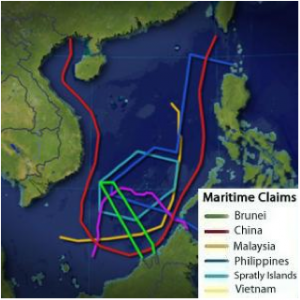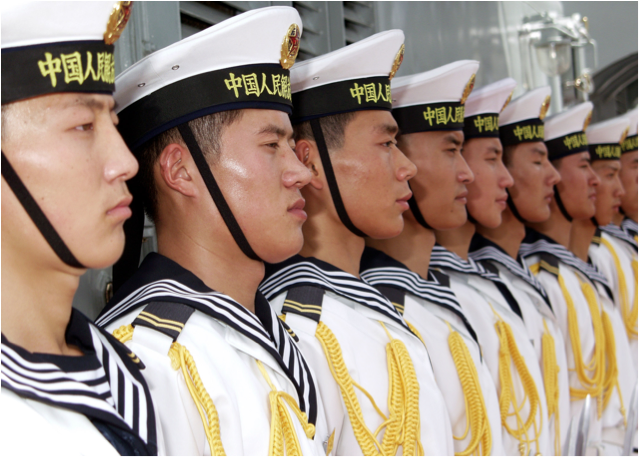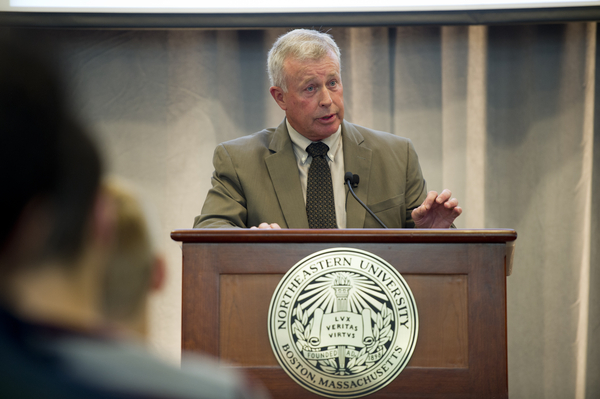With the launch of China’s newest naval vessel, a 1000 foot – 67,500-ton ex-Soviet aircraft carrier, it becomes a member of an elite group of nations. Only nine other nations operate these capital ships, of which only 20 exist worldwide. All nations on the United Nations Security Council, including China’s rival, India, operate and maintain at least one Carrier. The United States alone has eleven. These ships are meant to extend the reach of any nation in a wide range of tasks in all theaters. It is no secret that China has been working to procure a sizeable Blue Water Fleet that can protect its interests, especially its vast shipping routes. Many of these routes pass through the South China Sea, which has been the subject of territorial and boundary disputes between China and a multitude of nations. According to the Chinese Central Government, the region is of ‘core interest’ to national security. The disputes over who maintains sovereign control of the Paracel and Spratly Islands, both resource-rich areas, have escalated tensions in the region. Furthermore, the South China Sea has one of the very highest rates of international piracy in the world. The questions of paramount importance include how China’s adversaries will perceive this new vessel, and how the United States will react to the growing power of China? Will this extension of power be seen as a pacifier in the region, or as instigation?
According to the United Nations Convention on the Law of the Sea, states’ territorial waters extend twelve nautical miles from the ‘Coastal Baseline’ and states have the exclusive economic rights that extend 200 Nautical Miles from the same point. However, because of ‘historical control of the region,’ China claims the entire sea, including the islands within it, encompassing 1.3 million square miles, twice the size of Alaska. Within this area lie the Spratly and  Paracel Island chains that are also claimed by other nations including Vietnam, Brunei, Malaysia, the Philippines, and the Peoples Republic of China (Taiwan). Neither chain has an indigenous population and the islands of both chains barely stick out of the ocean at low tide. According to the U.S. Energy Information Administration, the South China Sea is estimated to contain twenty-eight billion barrels of oil, and the Chinese have estimated the Natural Gas reserves to be at two quadrillion cubic feet . All countries involved are stepping well outside the mandated and accepted dictum of the United Nations in order to claim these precious resources. Additionally, nearly 50% of all the world’s shipping passes through these waters, adding motivation for states to maintain as much control of the region as possible. Furthermore, the high traffic increases the scope of the security situation if tensions flare.
Paracel Island chains that are also claimed by other nations including Vietnam, Brunei, Malaysia, the Philippines, and the Peoples Republic of China (Taiwan). Neither chain has an indigenous population and the islands of both chains barely stick out of the ocean at low tide. According to the U.S. Energy Information Administration, the South China Sea is estimated to contain twenty-eight billion barrels of oil, and the Chinese have estimated the Natural Gas reserves to be at two quadrillion cubic feet . All countries involved are stepping well outside the mandated and accepted dictum of the United Nations in order to claim these precious resources. Additionally, nearly 50% of all the world’s shipping passes through these waters, adding motivation for states to maintain as much control of the region as possible. Furthermore, the high traffic increases the scope of the security situation if tensions flare.
Recently, Admiral Mike Mullen, the U.S. Joint Chiefs of Staff, travelled to China on a four day good will mission. There he reviewed China’s technical prowess in aviation and submarine technology. In a speech he made at Beijing’s Renmin University, Mullen explained the “trend we are seeing is that China and other nations are rapidly expanding their military-modernization efforts” and “with greater military power must come greater responsibility, greater cooperation; and, just as important, greater transparency.” The United States has a near monopoly on naval supremacy in the world and operates a number of bases in the region. Today it maintains its hegemonic role by patrolling these waters, but they are still plagued by abnormally high rates of piracy. A Situation Update published by the Regional Cooperation Agreement on Combatting Piracy and Armed Robbery against Ships in Asia (RECAAP), a multilateral anti-piracy pledge, claimed that piracy increased 30% between 2010 and the first quarter of 2011 . This, to which Adm. Mullen alluded, has provoked many nations to increase the size of their Navies.
While the developing world is modernizing its militaries, America’s domestic woes have threatened cuts to not only social programs but also to the size of its military. The Pentagon will have to make difficult decisions as to whether the size of its global fleet will be maintained or diminished. In the short-term, the United States should propose a joint exercise with the new Chinese aircraft carrier and its associated support vessels. This way, the U.S. can gauge its strengths and weaknesses while building a comprehensive strategic relationship with the Chinese Navy. This will pave the way for a draw down of U.S. forces in the region and a possible power sharing initiative, in which China patrols the waters where the United States cannot.
The introduction of China’s new carrier does not simplify the assessment of the situation. However, a single ship does not a super-power make. While some nations see the new vessel as a potential de-stabilizer, the short-term threat is not present. This new ship is still undergoing sea trials and lacks a full armament of jets and weapons. Once China receives these aircraft carriers, it will be years before they acquire the technical prowess to operate them at a proficient capacity. The United States still has, and will continue to have, tactical and numerical superiority for the foreseeable future. The U.S. now has an opportunity to maintain this superiority and to secure its future relations with the world’s fastest growing economy.
The situation in the South China Sea is complex, adorned with variables, and requires a creative solution to mitigate the risk of armed conflict. Adm. Mullen said it best in his speech at Renmin, claiming that “[t]he expansion of military power in your region, rather than making it more secure and stable, could have the opposite effect” . The world has seen this security dilemma play out before in a myriad of scenarios. The difference today is that we have a complex web of International Governmental and non-governmental organizations to help guide all parties away from combat. The international community should intervene and possibly establish a protected area around the islands until a peaceful resource-sharing resolution is reached. If the international community does not step in, the potential exists for a complete breakdown in global commerce should the hostility escalate to an unmanageable level.
Michael Trudeau
International Political Economy ‘13
United Nations Division for Ocean Affairs and the Law of the Sea. 10 Dec 1982. United Nations Convention of the Law of the Sea. UN.org
United States Energy Information Administration. March 2009. South China Sea. http://www.eia.gov/countries/regions-topics.cfm?fips=SCS
Global Security. 07 AUG 2011. http://www.globalsecurity.org/military/world/war/spratly-ship.htm
JCS Speech. Renmin University of China Event. As Delivered by Admiral Michael Mullen, Chairman of the Joint Chiefs of Staff , Beijing, China Sunday, July 10, 2011v. http://www.jcs.mil/speech.aspx?ID=1624
RECAAP Information Sharing Center. 9 MAR 2011. Situation Update Piracy and Armed Robbery Against Ships in Asia (January-March 2011) RECAAP.org.
The Economist. China’s Aircraft Carrier – Name and Purpose to be determined. 13-19 Aug. Volume 400, Number 8746 p. 38



